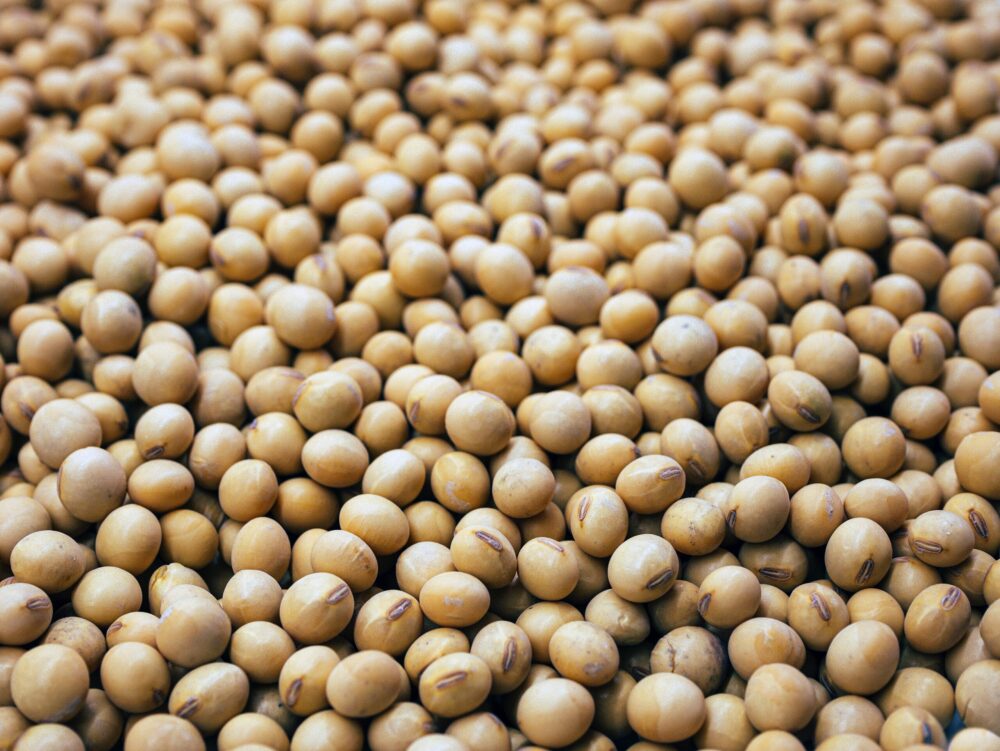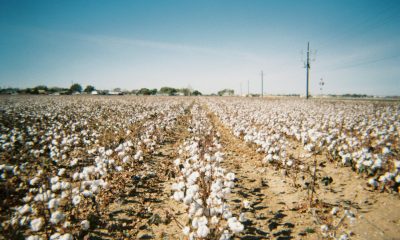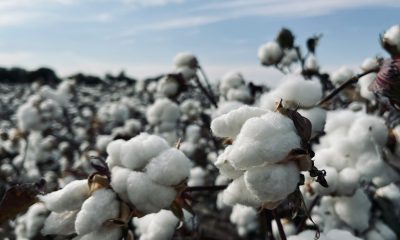Markets
Soybean Oil Closed Higher on Friday, but Lower for the Week
Soybeans and Soybean Meal were higher last week in response to the USDA reports that showed less-than-expected production and ending stocks levels for Soybeans. Production was estimated at 4.194 billion bushels and ending stocks were left unchanged at 220 million bushels as USDA cut back on export demand to leave ending stocks at what appears to be minimum levels for them.

Wheat: Wheat markets closed mixed last week and held the recent trading range. The moves came as USDA cut back on demand for US Wheat and increased ending stocks estimates more than anticipated by the trade but also cut back on world ending stocks. China bought 181,000 tons of SRW to support the Chicago market.
The war in Ukraine continues with Russia still bombing Ukrainian ports near the Black Sea and Danube River. Ukraine is now trying to load ships and export through the Black Sea and some ships have in fact been loaded at those ports. Russia is still exporting and offering Wheat into the world market and is getting quite a bit of business. Ukraine and the EU countries are offering as well and are getting new business due to the higher Russian prices.
Demand has been poor for US Wheat as Russia’s production looks strong and exports from Russia have not abated and Ukraine is still exporting, although mostly over land through the EU at higher costs. Ukraine has lately shipped at least three loads of grain through the Black Sea after bombing a lot of Russian ships to allow for safe passage. Weather forecasts call for drier weather for Australia and Argentina, with production losses now expected for both countries.
Weekly Chicago Soft Red Winter Wheat Futures

Weekly Chicago Hard Red Winter Wheat Futures

Weekly Minneapolis Hard Red Spring Wheat Futures

Corn: Corn closed higher last week as USDA crop reports showed less than expected US production and ending stocks estimates. Production was estimated at 15.064 billion bushels and ending stocks were estimated at 2.111 billion bushels. Oats closed lower in response to its own USDA estimates. The Corn harvest is continuing with good weather and yield reports show good and bad results with no real trend evident.
Farmers report no real sales of Corn as they wait for higher prices. Weather forecasts remain mostly dry but with moderate temperatures for the Midwest for the next week. The harvest is coming so moisture needs are less, and many producers report that Corn is shutting down early and that the harvest could start sooner than normal.
Demand for US Corn in the world market has been very low and domestic demand has been weak due to reduced Cattle and other livestock production. The Brazil Corn harvest is over so export prices for Corn from Brazil are relatively cheap and Brazil is getting the business. That could change in the coming year is the growing conditions deteriorate in Brazil as is possible in an El Nino year. It is already hot and dry in central and northern Brazil and in Argentina. Southern Brazil is too wet.
Weekly Corn Futures

Weekly Oats Futures

Soybeans and Soybean Meal: Soybeans and Soybean Meal were higher last week in response to the USDA reports that showed less-than-expected production and ending stocks levels for Soybeans. Production was estimated at 4.194 billion bushels and ending stocks were left unchanged at 220 million bushels as USDA cut back on export demand to leave ending stocks at what appears to be minimum levels for them. Soybean Oil closed higher on Friday in response to strong petroleum futures, but closed lower for the week. Additional buying was noted as Brazil remains hot and dry in northern areas and too wet in southern areas.
Argentina is also dry. Initial yield results for the new crop show that production and yields are above and below APH data with no real trend showing just yet. The data has been called disappointing to traders as production appears to be less than expected so far this crop year. Weather forecasts call for dry conditions and below-normal temperatures for the Midwest for the first half of the week. Ideas are that the top end of the yield potential is gone and severe damage is becoming possible in some areas.
Brazil’s basis levels are still low, and the US is being shut out of the market for most importers, but the US is price competitive now. Brazil is still selling a lot of Soybeans to China and other countries and reports indicate that the availability of Brazil Soybeans might be ramping down. The US sales to China have ramped up in the last month.
Weekly Chicago Soybeans Futures

Weekly Chicago Soybean Meal Futures

Rice: Rice closed a little lower in featureless trading last week. The USDA reports showed little to get excited about either up or down in price. Yields are called average to below average in Texas and average so far in Arkansas as the harvest moves forward.
The quality has been uneven with some crops affected by the extreme heat seen during the growing season. India will not allow Rice exports except for Basmati for now because of bad weather in some production areas.
Weekly Chicago Rice Futures

Palm Oil and Vegetable Oils: Palm Oil was higher last week on strength in other vegetable oils and petroleum markets. There were reports of increasing demand from India to help support futures as well. Traders still think that El Nino will cause big production problems down the road and are holding out hopes for rallies in the future, but supplies appear to be very strong for now.
Canola closed a little higher last week but remains in a trading range. Drier weather is generally forecast for the Prairies and the crops have been stressed, but some rain is falling now to maintain crop condition. Harvest has been active and speculators were selling.
Weekly Malaysian Palm Oil Futures

Weekly Chicago Soybean Oil Futures

Weekly Canola Futures:

Cotton: Cotton closed lower last week and trends are down on the daily charts. The USDA reports showed less production and ending stocks for the current marketing year but did not really move the market that much. The weekly export sales report showed bad demand. Ideas are that the US could be headed into a recession and cause demand to be soft.
Ideas of weaker demand due to economic problems in Asia continue and Chinese economic data continues to show weakness, but prices are supported by ideas of tight supplies here in the US and around the world. There are still many concerns about demand from China and the rest of Asia due to the slow economic return of China in the world market. There are production concerns about Australian and Indian Cotton as both countries are likely to suffer the effects of El Nino starting this Fall.
Weekly US Cotton Futures

Frozen Concentrated Orange Juice and Citrus: FCOJ closed a little higher on Friday and higher for the week in response to bullish production estimates released by USDA yesterday. Futures are now testing all-time highs seen in the weekly charts and set several weeks ago. Reports of short supplies in Florida and Brazil are around.
Futures are also being supported by forecasts for an above-average hurricane season that could bring a storm to damage the trees once again. Historically low estimates of production due in part to the hurricanes and in part to the greening disease that has hurt production, but conditions are significantly better now with scattered showers and moderate temperatures.
Weekly FCOJ Futures

Coffee: New York and London closed higher Friday and for the week on buying after the Brazil export data was released. Trends are up on the New York daily charts but are mixed in London. It has been hot and dry in Brazil and the weather is starting to support the prices in New York. Light rains are now being reported in central and southern growing areas. Demand for Robusta and lower quality Arabicas has improved.
The lack of offers from Asia, mostly from Vietnam but also Indonesia remains a main feature of the market, but the offers are starting to improve with the Vietnam harvest progressing and the US Dollar moving higher. Offers from Brazil and other countries in Latin America should be increasing but prices are considered a little cheap to create much selling interest from producers and the differentials offered have been very high.
These are moderating as the new harvest comes to the market. Coffee exports from top robusta producer Vietnam fell an annual 8.3% in the first nine months of 2023, government data showed. Vietnamese differentials are still elevated as the market waits for the new crop to arrive. Brazil’s exports for October were 3.3 million bags, down 5.3% from September.
Weekly New York Arabica Coffee Futures

Weekly London Robusta Coffee Futures

Sugar: New York and London closed mostly higher yesterday and trends are mixed on the daily charts. There are still forecasts for and reports of rain in Brazil after a spell of very hot and dry conditions, but the market continues to see stressful conditions in Asian production areas. The Brail rains are underway now, but showers have been light and scattered.
The Asian dryness is still the main feature. Many growing areas in India have been dry, and exports have indicated that production has suffered. The government there now says it will have more than enough production for the domestic demand but will limit exports to help control inflation.
There are also worries about the Thai and Indian production potential due to El Nino. Offers from Brazil are still active but other origins are still not offering, and demand is still strong. Brazil mills produced 3.36 million tons of sugar in the second half of September, nearly double the amount seen this time last year and above analyst expectations. China estimated imports at 5.0 million tons this year, unchanged from the previous estimate and up from 3.6 million tons last year.
Weekly New York World Raw Sugar Futures

Weekly London White Sugar Futures

Cocoa: New York and London closed higher last week and the trends turned up again in London. The EU grind data was stronger than expected and was down 0.9% from last year. Ivory Coast exports are down 10% so far this year. The main crop harvest comes into focus and as farmers in West Africa report good pod development.
The supply and demand situation remains bullish. Ideas of tight supplies remain based on more reports of reduced arrivals in Ivory Coast and Ghana continue, Midcrop production ideas are lower now with diseases reported in the trees due to too much rain that could also affect the main crop production.
Weekly New York Cocoa Futures

Weekly London Cocoa Futures

__
(Featured image by Daniela Paola Alchapar via Unsplash)
DISCLAIMER: This article was written by a third party contributor and does not reflect the opinion of Born2Invest, its management, staff or its associates. Please review our disclaimer for more information.
This article may include forward-looking statements. These forward-looking statements generally are identified by the words “believe,” “project,” “estimate,” “become,” “plan,” “will,” and similar expressions. These forward-looking statements involve known and unknown risks as well as uncertainties, including those discussed in the following cautionary statements and elsewhere in this article and on this site. Although the Company may believe that its expectations are based on reasonable assumptions, the actual results that the Company may achieve may differ materially from any forward-looking statements, which reflect the opinions of the management of the Company only as of the date hereof. Additionally, please make sure to read these important disclosures.
Futures and options trading involves substantial risk of loss and may not be suitable for everyone. The valuation of futures and options may fluctuate and as a result, clients may lose more than their original investment. In no event should the content of this website be construed as an express or implied promise, guarantee, or implication by or from The PRICE Futures Group, Inc. that you will profit or that losses can or will be limited whatsoever. Past performance is not indicative of future results. Information provided on this report is intended solely for informative purpose and is obtained from sources believed to be reliable. No guarantee of any kind is implied or possible where projections of future conditions are attempted. The leverage created by trading on margin can work against you as well as for you, and losses can exceed your entire investment. Before opening an account and trading, you should seek advice from your advisors as appropriate to ensure that you understand the risks and can withstand the losses.

-

 Biotech2 weeks ago
Biotech2 weeks agoDiscovery of ACBP Molecule Sheds Light on Fat-Burning Tissue Suppression and Metabolic Disease
-

 Impact Investing6 days ago
Impact Investing6 days agoFrance’s Nuclear Waste Dilemma Threatens Energy Future
-

 Markets2 weeks ago
Markets2 weeks agoGlobal Sugar Market Sees Mixed Trends Amid Weather Shifts and Price Pressures
-

 Fintech3 days ago
Fintech3 days agoKraken Launches Krak: A Game-Changing Peer-to-Peer Crypto Payment App
























